If you’re looking for the best beginner camera, it’s worth considering Sony’s different options. If you’re looking to make the jump from shooting with your smartphone to using a camera with a bigger sensor, Sony is a great brand to consider. From its powerful RX series of compact and bridge cameras up to its pioneering Sony A7 series cameras, Sony has an entry point for everyone. Like the best Canon cameras for beginners and best Nikon cameras for beginners we recently reviewed, the best Sony cameras for beginners are those that incorporate many of the advanced features from the company’s flagship models.
For instance, Sony cameras are well-known for their AF prowess, and many of Sony’s beginner cameras offer lightning fast and precise autofocus, along with tracking options such as Eye AF. The best Sony cameras for beginners also offer advanced video features and 4K resolution, meaning that if you are just getting to grips with vlogging and streaming there is plenty of room for you to learn and grow with your camera.
In this round-up we’ve taken a look at the best beginner Sony cameras from the company’s different ranges so that you have options depending on your priorities as a photographer. If you want resolution, you’ll probably want to consider a beginner full-frame camera from the A7 line. If extreme focal length is important to you, a bridge camera from the RX10 series is probably your best bet.
All of these recommendations are based on our tests and first-hand experience shooting with these Sony cameras. For a broader look at what the brand has to offer, check out our guide to the best Sony cameras you can buy today. For a deeper dive into the many different camera types and features available, check out our range of camera buying guides.
- Photography for beginners: essential techniques and which cameras to buy
The best Sony cameras for beginners you can buy today
Specification
- Sensor: 26MP Exmor R sensor
- Image processor: BIONZ XR image processing engine
- Oversampling: 6K oversampling
- Recording: 4K60p / 4K50p recording
- Presets: Creative Look presets
- Color Profiles: S-Cinetone and S-Log3 support
- Bit Depth: 4:2:2 10-bit recording
- Autofocus: 759 AF points with 94% coverage
- Battery: Z battery for extended life
- Streaming: 4K30p and FHD60p streaming via USB-C
The Sony ZV-E10 II is a significant upgrade for content creators, particularly vloggers. It features a 24.2 MP APS-C sensor, offering high-quality stills and 4K video recording. The camera stands out with its advanced autofocus system, featuring real-time tracking and Eye AF, ensuring sharp focus on moving subjects. The vari-angle touchscreen enhances usability, allowing creators to shoot from different angles easily. Audio quality is a priority, with a directional three-capsule microphone and a dedicated mic input for better sound capture.
While the camera is highly portable and lightweight, it maintains robust performance, making it suitable for both beginners and more experienced creators. However, it lacks an electronic viewfinder, which might be a drawback for some traditional photographers. The overall design and user interface are tailored for easy operation, especially when shooting video content.
The ZV-E10 II’s versatility makes it a solid choice for anyone looking to elevate their content creation without diving into overly complex gear. It’s particularly appealing for those who prioritize video work but also want the option to capture high-quality still images.
£950
$943For
- Cinematic vlog settings
- Advanced AF capabilities
- 4K60p recording
Sony A6100
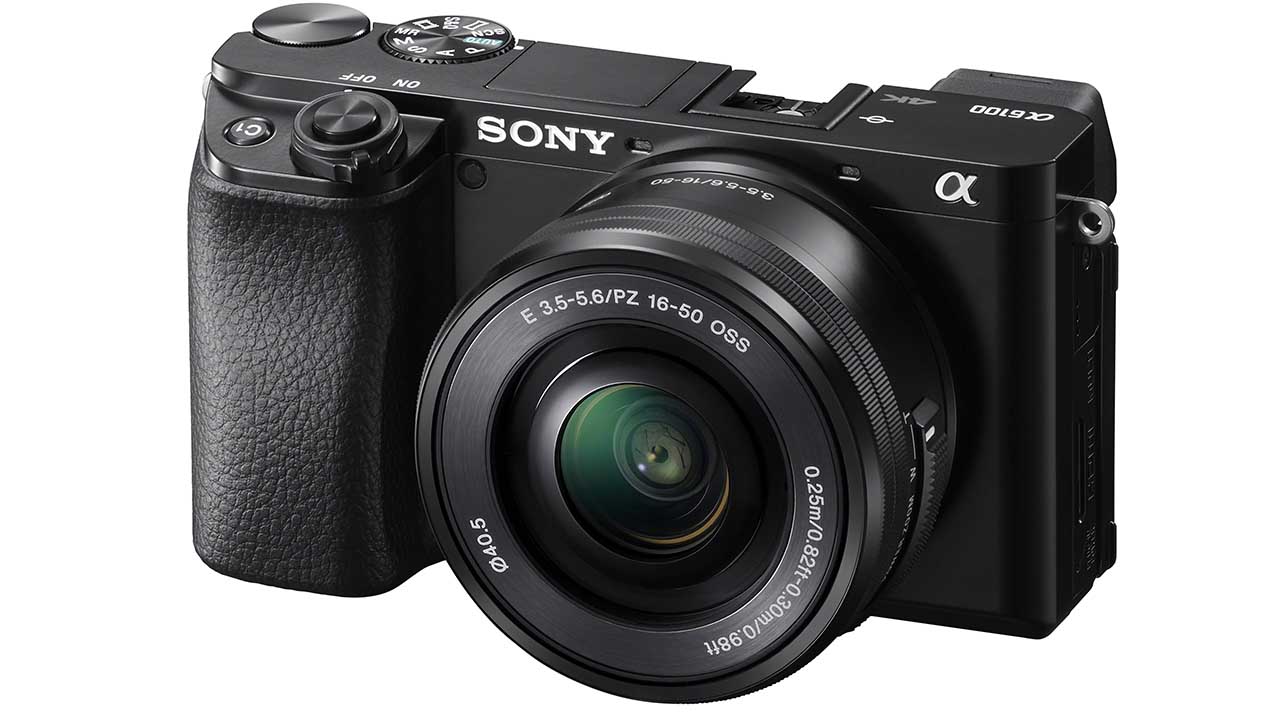
Specification
- Sensor: 24.2MP Exmor CMOS image sensor
- Video: 4K movie recording with full-pixel readout
- Screen: 180-degree tiltable, 3.0-type 921k-dot LCD touch screen
- Autofocus: 425 phase-detection and 425 contrast-detection AF points
£830
€900For
- Real-time Tracking and Eye AF
- 4K video
- Very fast AF
Sony ZV-1
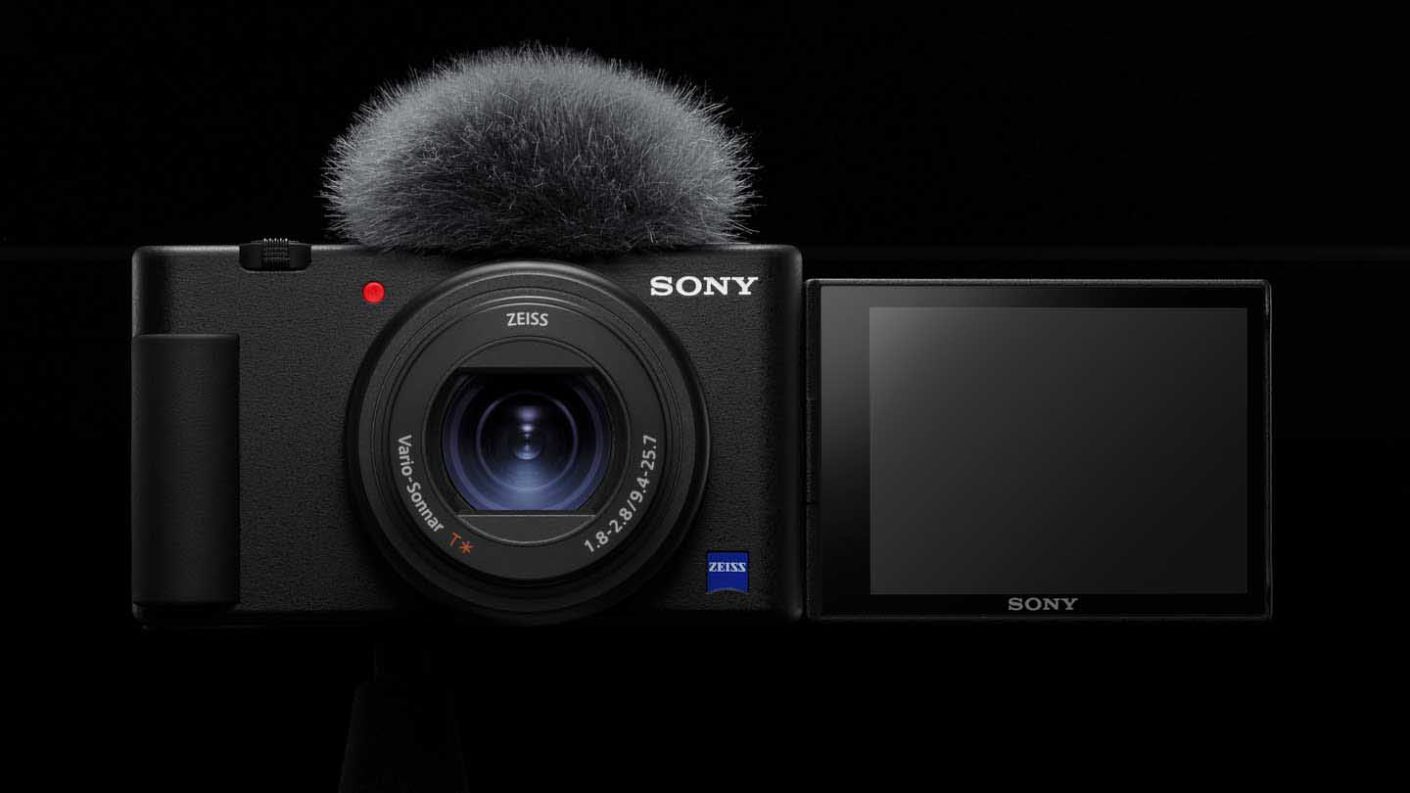
Specification
- Camera type: Compact
- Announced: 26th May 2020
- Sensor: 20.1Mp 1-inch type (13.2mm x 8.8mm) Exmor RS CMOS
- Lens: Zeiss Vario-Sonnar T* 9.4-25.7mmm (24-70mm equivalent) f/1.8-2.8
- Sensitivity range: Stills: ISO 100-25,600, Video: ISO 125-12,800
- Autofocus: 315 focal-plane phase-detection AF points, Eye AF: Humans (stills and video) or Animal (stills)
- Burst Mode: Hi: 24fps, Mid: 10fps, Low: 3fps
- Video: 4K in-body movie recording with full pixel readout and no binning, Log & Gamma options, slow-mo at up to 1000fps
- Viewfinder: No
- Screen: Vari-angle 3-inch touchscreen
- Stabilisation: Optical for stills, optical and electronic for video
- Hotshoe: Multi-interface (can connect an XLR mic via an adapter)
- Storage: SD/SDHC/SDXC
- Dimensions (WxHxD): 105.5 x 60 x 43.5mm / 4 1/4 × 2 3/8 × 1 3/4inches
- Weight: 294g with battery and SD card or body only
The Sony ZV-1 is a compact, all-in-one camera tailored for vloggers and content creators. It features a 1-inch, 20.1 MP sensor, which delivers high-quality stills and impressive 4K video with full pixel readout and no pixel binning. The camera’s standout feature is its advanced autofocus system, which includes real-time tracking and Eye AF, ensuring sharp focus during video shoots. The built-in directional microphone with a windscreen enhances audio quality, while the vari-angle touchscreen makes it easy to frame shots from different angles.
The ZV-1 also includes a background defocus button for instant bokeh effects, making it ideal for creators who want to easily achieve professional-looking results. Its compact size and user-friendly interface make it accessible to beginners, yet powerful enough to meet the needs of more experienced users. The camera lacks interchangeable lenses, which might limit some creative possibilities, but its built-in 24-70mm equivalent lens covers a versatile range for most situations.
Overall, the Sony ZV-1 is a fantastic choice for those prioritizing portability and ease of use in their content creation journey, especially for video-centric work.
£700
$749.99For
- Designed specifically for vloggers but also a capable stills camera
- Stabilised 4K video
- Vari-angle touchscreen
Sony RX100 VII
Specification
- Camera type: Compact
- Sensor: 20.1Mp 1-inch type (13.2mm x 8.8mm) Exmor RS CMOS
- Lens: ZEISS Vario-Sonnar T* 9-72mmm (24-200mm equivalent) f/2.8-4.5
- Autofocus: 357 focal-plane phase-detection and 425 contrast-detection AF points
- Burst Mode: 90fps in JPEG or Raw format in Single Burst Shooting mode
- Video: 4K in-body movie recording with full pixel readout
- Viewfinder: 0.39-inch 2,359,296-dot OLED (pop-up)
- Screen: Tilting 3-inch 921,600-dot TFT touchscreen (up 180-degrees, down 90-degrees)
- Storage: SD/SDHC/SDXC
- Dimensions (WxHxD): 101.6 x 58.1 x 42.8 mm / 4 x 2 3/8 x 1 11/16-inch
- Weight: 302g / 10.7oz with battery and SD card or 275g / 9.8oz body only
Promising ‘A9-level’ AF performance as well as 90fps single burst shooting, the RX100 VII turned a lot of heads when it was announced and reinforced Sony’s reputation as a true innovator in the market.
Inside the RX100 VII is a 1-inch, stacked 20.1-megapixel Exmor RS CMOS sensor with a DRAM chip and Sony’s Bionz X image processor. On the outside is a ZEISS Vario-Sonnar T* 24-200mmviii F2.8-4.5.
What should really get people excited, though, is the technology the RX100 VII inherits from Sony’s A9. Like the A9, the RX100 VII’s image sensor realises blackout-free shooting for a completely live view, even when continuous shooting at 20fps.
The RX100 VII also promises ‘A9-level’ AF/AE tracking performance during continuous shooting, meaning the camera performs AF/AE calculations up to 60 times per second and captures fast-moving action at 20fps with AF/AE tracking.
Sony’s Real-time Eye AF and Real-time Tracking modes also make their debut for the first time in a compact camera. With 357 focal-plane phase-detection AF points and 425 contrast-detection AF points, its AF system is among the best you will find both in a beginner camera and one that is this small.
£1200
$1198 / €1300For
- Best-in-its-class AF system
- Stabilised 4K video
- Great focal length range
Sony RX10 IV
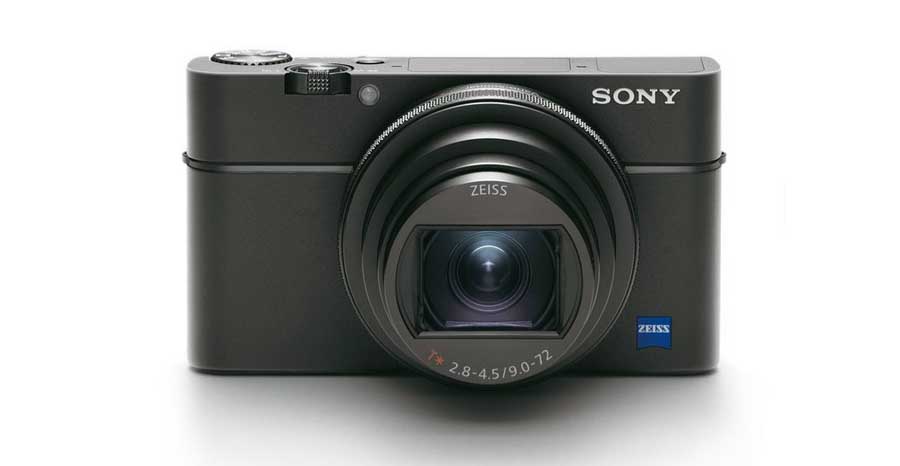
Specification
- Sensor: One-inch, 20.1-megapixel Exmor RS CMOS
- Lens: Zeiss Vario-Sonnar T* 24-600mm (equivalent) f/2.4-4
- Autofocus: 315-point focal-plane phase-detection autofocus
- Viewfinder: 0.39-inch electronic viewfinder, 2,359,296-dots
- Screen: 3-inch, tilting, touch-sensitive, 1,440,000-dot
- Max video resolution: 4K
- Max frame rate: 24fps
Unlike most bridge cameras, the Sony RX10 IV uses a larger one-inch sensor that offers 20.1-megapixel resolution. This is combined with a 25x optical zoom (24-600mm equivalent in 35mm terms) and Sony’s powerful BIONZ X processor and front-end LSI. Mix all these together and you’ve got something which has been designed for serious performance.
What’s great about the RX10 IV is that because it copes so well with a variety of different subjects, it’s perfect for beginner photographers who haven’t yet found their niche and are exploring how to shoot a different types of images.
The RX10 IV isn’t cheap, and it might be more money than you want to splash out for a beginner camera with a fixed lens, but with such an impressive number of feature, super image quality and performance and in a lightweight body, this is not only one of the best cameras for beginners but one of the best cameras full stop.
£1499
$1698For
- Super-fast AF
- 4K video
Sony A7C
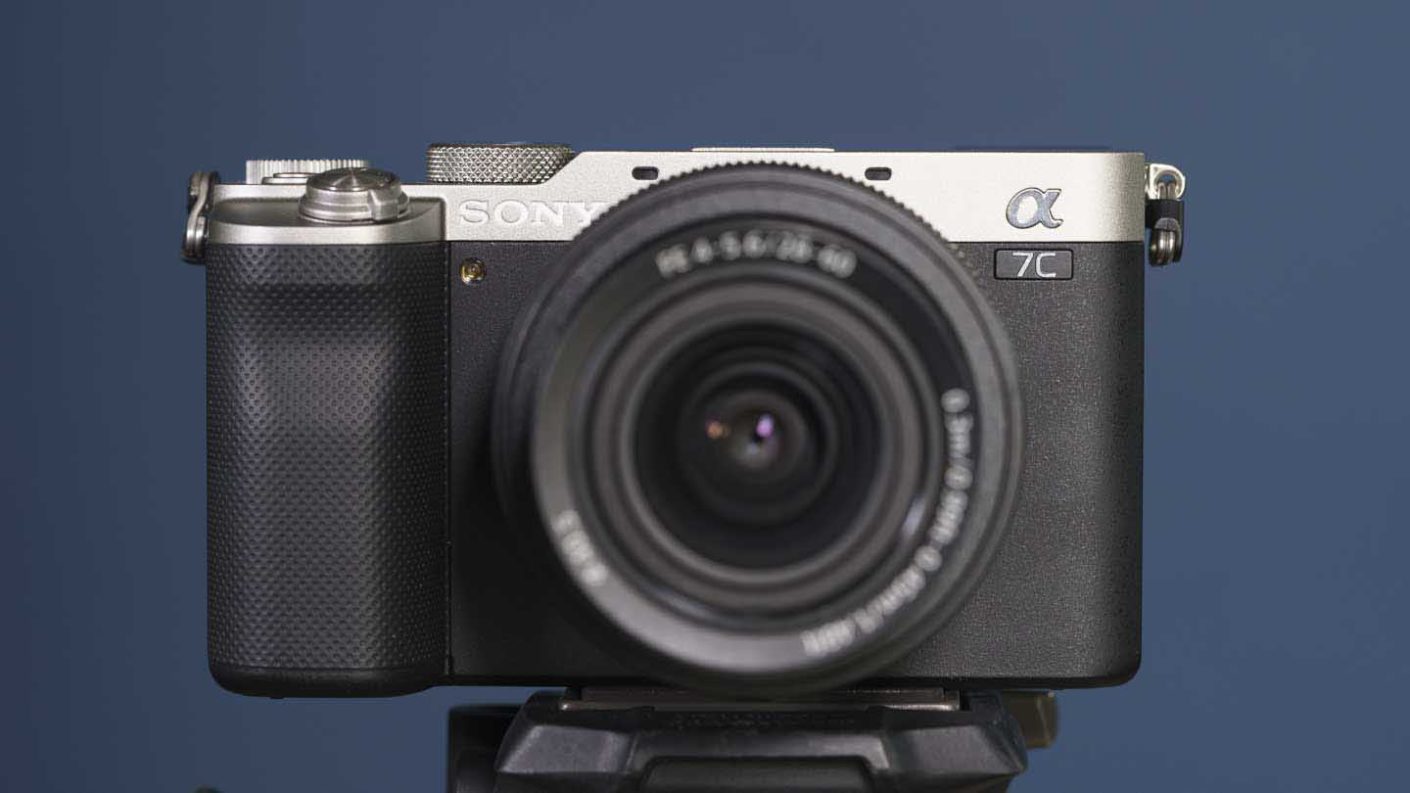
Specification
- Announced: 15th September 2020
- Camera type: Full-frame mirrorless
- Sensor: 24.2Mp Full frame (35.6×23.8mm), Exmor R CMOS sensor
- Processor: Bionz X
- Lens mount: Sony E
- Sensitivity range: ISO 100-51,200, expandable to ISO 50-204,800
- Maximum continuous shooting rate: 10fps with full AF and metering
- Video resolution: 4K: 3840 x 2160 (4:2:0, 8bit, NTSC) (Approx.) 30p (100Mbps / 60Mbps), 3840 x 2160 (4:2:0, 8bit, NTSC) (Approx.) 24p (100Mbps / 60Mbps), 3840 x 2160 (4:2:0, 8bit, PAL) (Approx.) 25p (100Mbps / 60Mbps)
- Autofocus system: Hybrid with 693 phase detection points and 425 contrast detection points
- Eye AF: Stills: Human or Animal, Video: Human
- Viewfinder: 0.39-inch 2,359,296-dot OLED electronic viewfinder
- Screen: Vari-angle 3-inch 921,600-dot vari-angle touchscreen
- Stabilisation: 5-axis in-body image stabilisation giving up to 5EV shutter speed compensation
- Storage: SD/SDHC/SDXC (UHS-I/II)
- Dimensions (W x H x D): 124.0 x 71.1 x 59.7mm / 5 x 2 7/8 x 2 3/8inches
- Weight: 509g / 1lb 2.0oz with battery and card
£1709
$1798For
- Small for a full-frame camera
- Vari-angle screen
- Excellent AF system
Sony ZV-E10

Specification
- Camera type: Mirrorless
- Announced: 27th July 2021
- Sensor: 24.2Mp APS-C format (23.5mm x 15.6mm) Exmor CMOS
- Sensitivity range: Stills: ISO 100-32,000 expandable to ISO 50-51,200, Video: ISO 100-32,000
- Autofocus: 425 phase-detection AF points, 425 contrast-detection AF points, Eye AF: Humans or Animal (stills and video)
- Burst Mode: Hi+: 11fps, Hi: 8fps, Mid: 6fps, Low: 3fps
- Video: 4K 3840 x 2160 (4:2:0, 8bit, NTSC) 30p (100Mbps / 60Mbps), 3840 x 2160 (4:2:0, 8bit, NTSC) 24p (100Mbps / 60Mbps), 3840 x 2160 (4:2:0, 8bit, PAL) 25p (100Mbps / 60Mbps)
- Viewfinder: No
- Screen: Vari-angle 3-inch 921,600-dot touchscreen
- Stabilisation: Electronic for video - SteadyShot Standard or SteadyShot Active
- Hotshoe: Multi-interface
- Storage: SD/SDHC/SDXC
- Dimensions (WxHxD): 115.2 x 64.2 x 44.8 mm / 4 5/8 x 2 5/8 x 1 13/16 inches from grip to monitor
- Weight: 343g / 12.1oz with battery and SD card
£680
$698For
- Designed specifically for vloggers but also a capable stills camera
- Great AF system
- Good audio options
Sony A6400
Specification
- Phase detection points: 425
- Contrast AF points: 425
The Sony Alpha 6400 is a highly capable APS-C mirrorless camera that strikes a balance between portability and advanced features. It boasts a 24.2 MP sensor, delivering excellent image quality and impressive performance in various lighting conditions. The standout feature is its autofocus system, which includes real-time tracking and Eye AF, making it perfect for capturing fast-moving subjects and portraits with ease.
The camera supports 4K video recording with no time limit, catering to vloggers and videographers. Its compact design includes a tilting LCD touchscreen, which is useful for selfies and creative shooting angles. While it lacks in-body image stabilization (IBIS), the Alpha 6400’s robust feature set, combined with a wide range of compatible lenses, makes it an ideal choice for both photography enthusiasts and content creators looking to step up from entry-level gear.
Overall, the Sony Alpha 6400 offers a powerful package for those who want more advanced features without moving to a full-frame system, making it a versatile choice for both stills and video work.

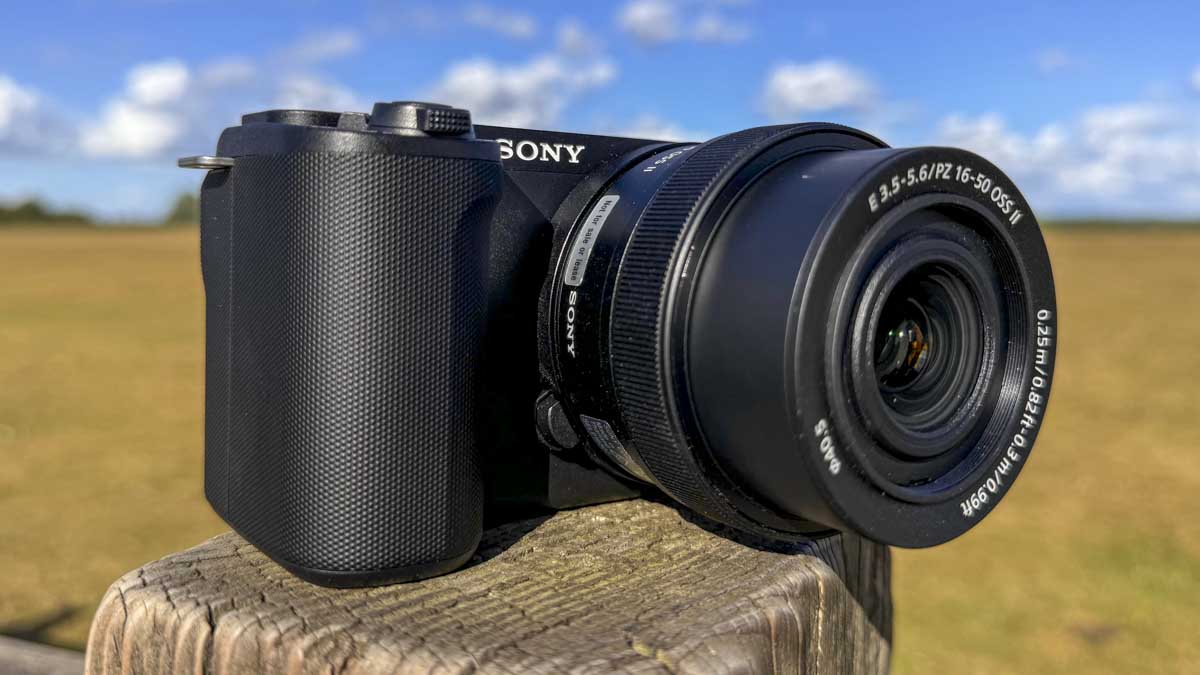



Leave a Reply